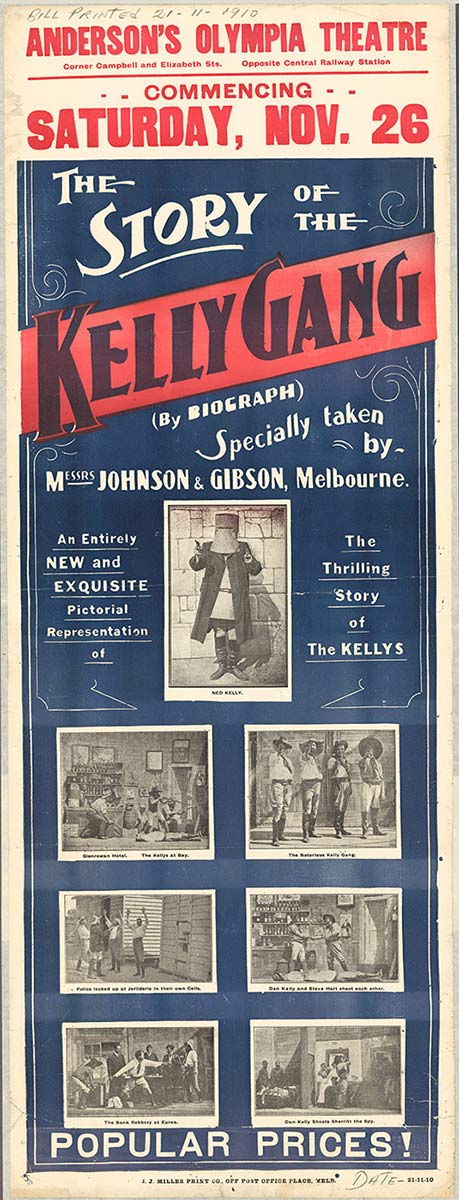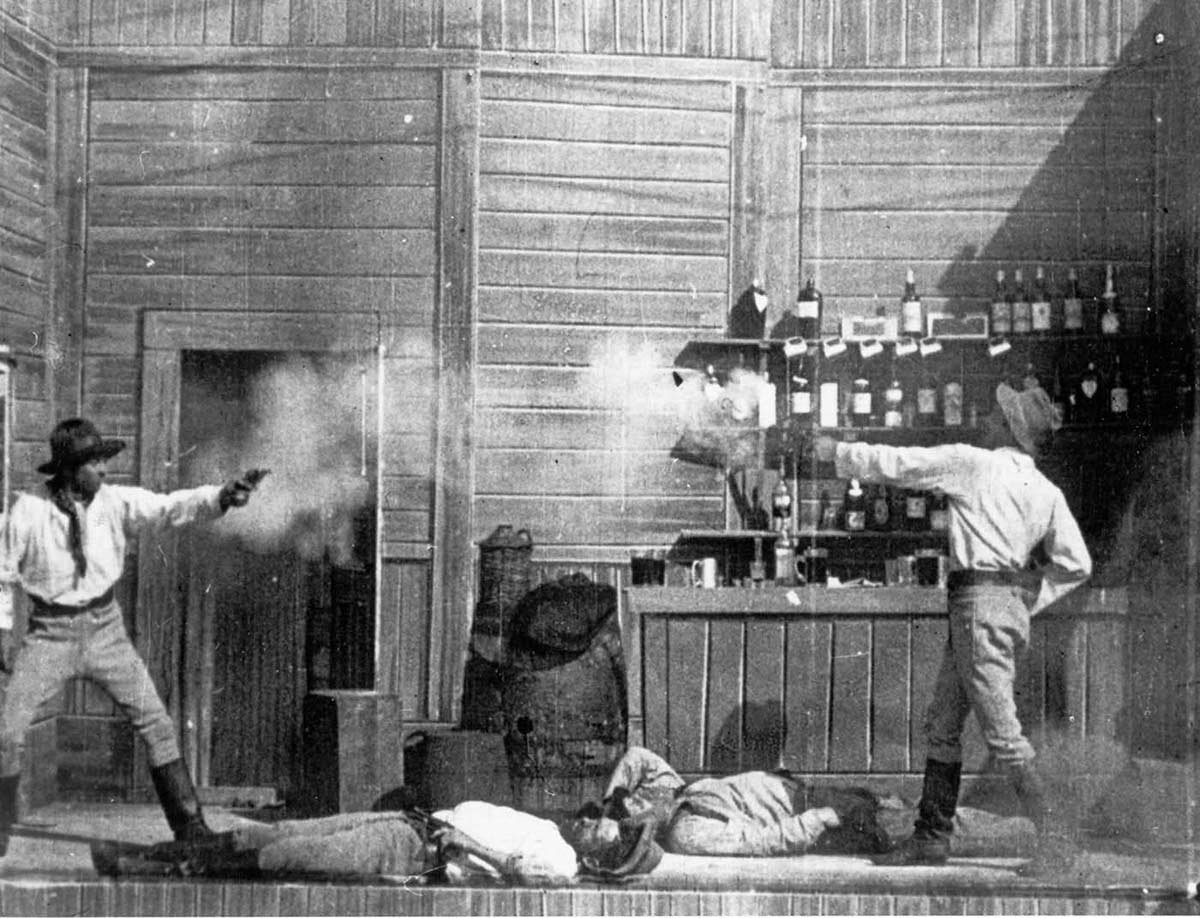On Boxing Day 1906 The Story of the Kelly Gang opened at the Athenaeum Theatre in Melbourne. It was the first multi-reel, feature-length film ever produced in the world.
The film caused controversy by presenting the Kelly gang sympathetically. The Victorian Government tried to censor it but the public flocked to screenings around Australia and then internationally.
Paul Byrnes, film critic:
It is difficult now, 100 years later, to imagine the impact the film must have had on audiences in 1906.

Early motion pictures
Moving films were shown to the public in the 1890s in Europe and North America by travelling exhibitors who set up in temporary spaces, or in conjunction with vaudeville programs in permanent theatres around the world.
The popularity of the medium made it clear that moving films could be presented as stand-alone entertainment. Evening-long programs of silent films interspersed with sound recordings of the latest popular musicians became commonplace.
One of the first commercial film successes was the American movie The Great Train Robbery in 1903.
It was just over 10 minutes long, a typical length for the time, but it was the first film with a cohesive narrative. The Great Train Robbery’s success spread worldwide.
Australian film history
In Melbourne, the Tait family of five brothers, who were all involved in show business, had begun including films in their concert programs at the Athenaeum Theatre.
They had been impressed by The Great Train Robbery although it was being exhibited by a rival entrepreneur.
In early 1906 the Taits took their first step into movie production when they financed Living Hawthorne, a documentary-style short film about the Melbourne suburb.
John and Nevin Tait had been influenced by several long-running stage productions about bushranger Ned Kelly's last stand at Glenrowan in 1880.
By the turn of the 20th century the Kelly story had become a myth familiar to many Australians and the Taits saw it as a perfect subject for a longer narrative film.
Production of The Story of the Kelly Gang
The Story of the Kelly Gang was financed jointly by the Taits and Millard Johnson and William Gibson. Johnson and Gibson were chemists by profession, but they had acquired a projector and were successfully showing films to crowds across Melbourne.
Charles Tait, the brother with the most theatrical production experience, directed the movie. Some of the cast and costumes were secured from a local theatre company that had staged a recent production of the Kelly story.
The film was shot around Melbourne. The outdoor scenes were probably filmed at the estate of Charles Tait’s wife’s family near Heidelberg. Some of the interior scenes were shot on sets built in the back garden of Tait’s home.
The production took six months and cost £1,000, a large amount at that time.
First screenings
The Story of the Kelly Gang opened at the Athenaeum Theatre on Collins Street in Melbourne on 26 December 1906. It ran for five weeks to full houses. An actor, sometimes two, added voices to the screening and young boys were employed backstage to create sound effects.
The film opened at Adelaide's Town Hall on the same day. It then screened at the Palace Theatre in Sydney and Centennial Hall, Brisbane, in February 1907.
The Biograph Company was employed to tour the film to regional towns across Australia and by September 1907 it was being shown in New Zealand and in England where it was advertised as the ‘longest film ever made’.
The Story of the Kelly Gang was edited multiple times over the years and was 70 to 80 minutes long, depending on the edition.
Financially the film was a great success, with William Gibson claiming the production returned £25,000 to its investors.
Film censorship
The film depicted Ned Kelly as a hero and the police as villains. This displeased the Victorian Government and police who claimed The Story of the Kelly Gang was responsible for an increase in crime. The film was banned in Benalla and Wangaratta, towns in the north of the state with connections to the Kelly story.
In April 1912 the Victorian Government banned a revised version of the film from being screened altogether.
Legacy of The Story of the Kelly Gang
The Story of the Kelly Gang was shown internationally and became a starting point for the development of narrative feature films, which continue to thrive to this day.
In our collection
Explore Defining Moments
References
Restoration of the original 1906 film, Australian Screen
Tait Brothers, Australian Dictionary of Biography
Scott Murray (ed), Australian Cinema, Allen and Unwin, St Leonards, NSW, 1994.
Andrew Pike and Ross Cooper, Australian Film: 1900–1977, Oxford University Press, Melbourne, 1998.
Saskia Vanderbent, Australian Film, Pocket Essentials, Harpeden, UK, 2006.
